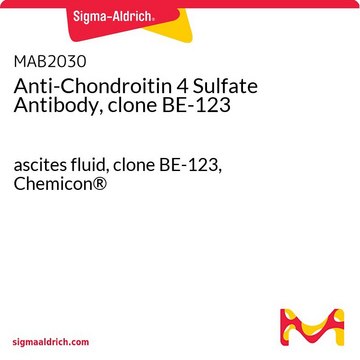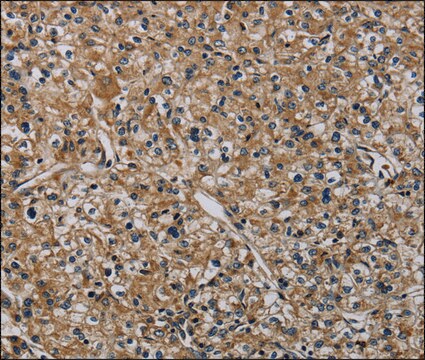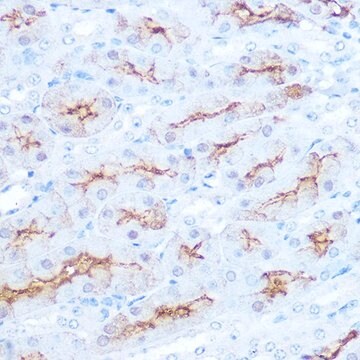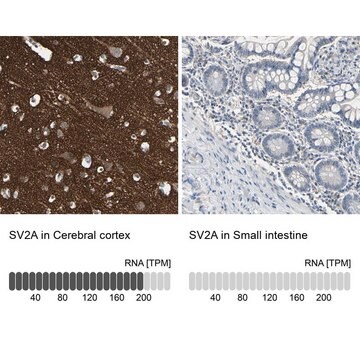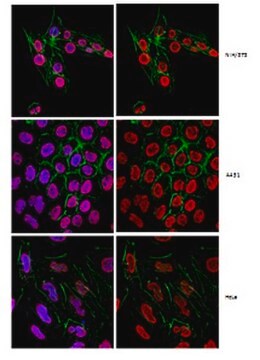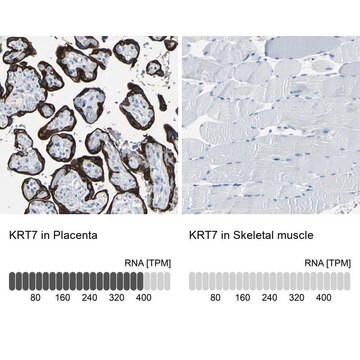ABN2270
Anti-phospho AEP (Ser226)
from rabbit
Sinónimos:
Legumain, Asparaginyl endopeptidase, Protease cysteine 1, Delta Secretase
About This Item
Productos recomendados
origen biológico
rabbit
forma del anticuerpo
affinity isolated antibody
tipo de anticuerpo
primary antibodies
clon
polyclonal
reactividad de especies
human
envase
antibody small pack of 25 μg
técnicas
activity assay: suitable
immunofluorescence: suitable
western blot: suitable
isotipo
IgG
Nº de acceso NCBI
Nº de acceso UniProt
modificación del objetivo postraduccional
phosphorylation (pSer226)
Descripción general
Especificidad
Inmunógeno
Aplicación
Neuroscience
Immunofluorescence Analysis: A representative lot detected phospho AEP (Ser226) in Immunofluorescence applications (Wang, Z.H., et. al. (2017). Mol Cell. 67(5):812-825).
Kinase Assay: A representative lot detected phospho AEP (Ser226) in HEK293 cells treated with SRPK2 and in vitro kinase assays (Wang, Z.H., et. al. (2017). Mol Cell. 67(5):812-825).
Calidad
Western Blotting Analysis: A 1:500 dilution of this antibody detected phospho AEP (Ser226) in lysates from HEK293 cells co-transfected mammalian GST-tagged (mGST) AEP and wild-type (WT) SRPK2, but not in cells co-transfected with knockdown (KD) SRPK2.
Descripción de destino
Forma física
Almacenamiento y estabilidad
Otras notas
Cláusula de descargo de responsabilidad
¿No encuentra el producto adecuado?
Pruebe nuestro Herramienta de selección de productos.
Certificados de análisis (COA)
Busque Certificados de análisis (COA) introduciendo el número de lote del producto. Los números de lote se encuentran en la etiqueta del producto después de las palabras «Lot» o «Batch»
¿Ya tiene este producto?
Encuentre la documentación para los productos que ha comprado recientemente en la Biblioteca de documentos.
Nuestro equipo de científicos tiene experiencia en todas las áreas de investigación: Ciencias de la vida, Ciencia de los materiales, Síntesis química, Cromatografía, Analítica y muchas otras.
Póngase en contacto con el Servicio técnico


